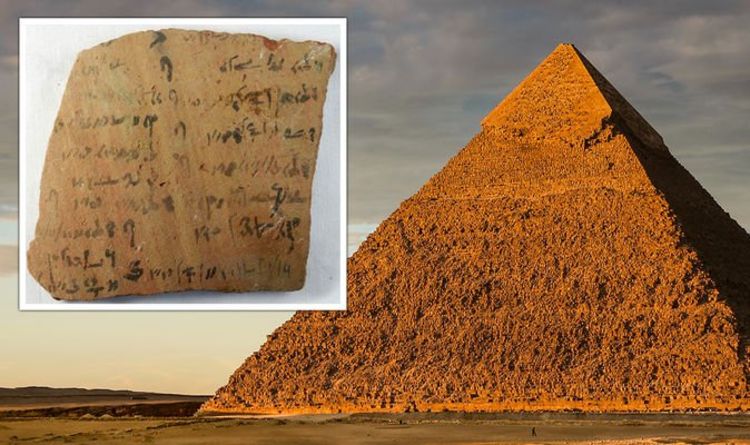

The discovery was made in the ancient Egyptian town of Athribis, near to the modern city of Sohag, Egypt. Experts uncovered thousands of ostraca – which are inscribed pieces of pottery. They were used as notepads thousands of years ago for ancient Egyptians to write private letters, laundry lists, and literary works.
Professor Christian Leitz, a researcher with the Institute for Ancient Near Eastern Studies, said: “In ancient times, ostraca were used in large quantities as writing material, inscribed with ink and a reed or hollow stick.”
In a statement, the team added: “These ostraca provide a variety of insights into the everyday life of Athribis.
“Around 80 percent of the potsherds are inscribed in Demotic, the common administrative script in the Ptolemaic and Roman periods, which developed from Hieratic after 600 BCE.
“Among the second most common finds are ostraca with Greek script, but we also came across inscriptions in Hieratic, hieroglyphic and — more rarely — Coptic and Arabic scripts.”
There were a variety of different ostrica – some have picture, some words, and others a mixture.
The team added: “The contents of the ostraca vary from lists of various names to accounts of different foods and items of daily use.
“A surprisingly large number of sherds could be assigned to an ancient school.
“There are lists of months, numbers, arithmetic problems, grammar exercises and a ‘bird alphabet’ — each letter was assigned a bird whose name began with that letter.
READ MORE: Fishing mystery SOLVED: Defra uncovers ’cause’ of UK’s crab and lobster stock wipe out
The famous Palermo stone indicates Egyptian occupation of the site dating back to the Old Kingdom, with the earliest mention of Athribis dating to the reign of Sahure.
Some believe this was confirmed in 2010, with the discovery of a mastaba dating to the late Third Dynasty to early Fourth Dynasty in nearby Quesna.
Other evidence also exists of occupation during the 12th Dynasty of the Middle Kingdom period.
The recent finding is special as much of the preexisting artefacts are being lost every year because local farmers like to use the fertiliser from the ancient mudbrick blocks that were used for most of the buildings.





More Stories
POLL: Would you install a hydrogen-ready boiler in your home?
Hearses line the streets of Beijing as China’s Covid crisis causes crematorium backlog
London Defender Person Of The Year Is Genius Inventor Andre Gray 2022